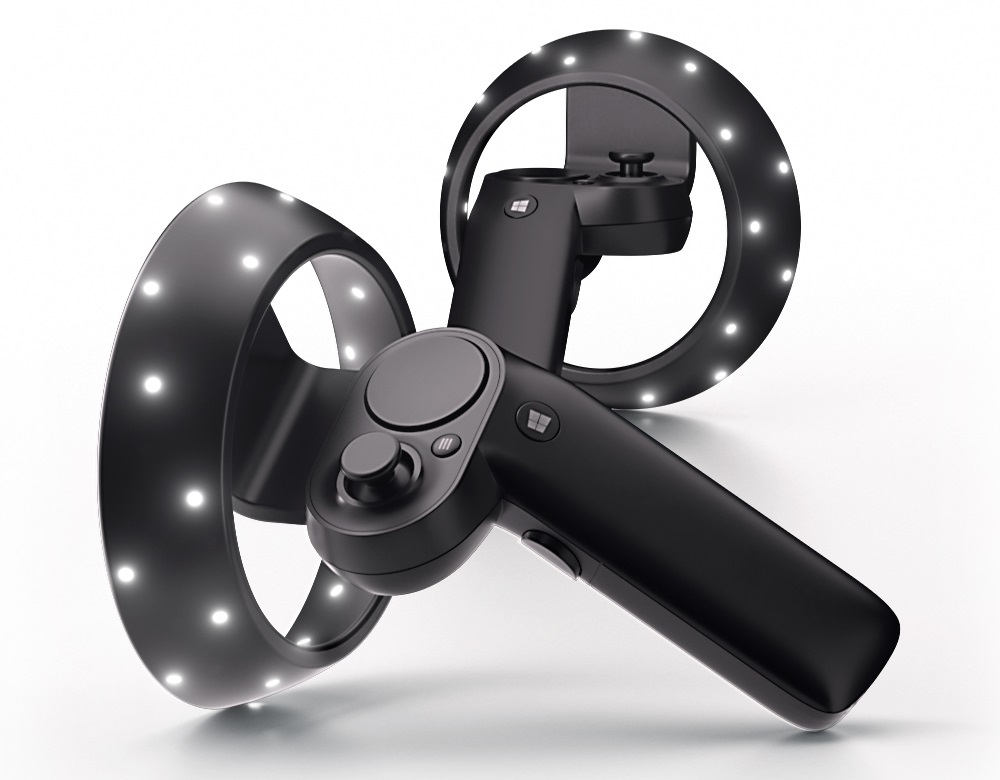At its Build 2017 developer conference today, Microsoft unveiled the first Windows Mixed Reality motion controllers, featuring responsive tracking and six degrees of freedom, with no markers required. A headset paired with controllers will offer experiences across creativity tools, productivity, games, and entertainment. Microsoft partners (Acer, Asus, Dell, HP, and Lenovo) plan to market and sell these controllers on retail shelves “this holiday.”
To get developers on board in time for the Windows 10 Falls Creators Update and these devices, Microsoft today also announced a Windows Mixed Reality dev kit. Developers can preorder an Acer VR headset for $299 (U.S. and Canada) or HP VR headset for $329 (U.S. and Canada), starting today from the Microsoft Store. They will ship “later this summer.”

Back in October, Microsoft shared that Edge in the Windows 10 Creators Update would support 3D objects, virtual reality, and mixed reality experiences. The company also revealed at the time that this functionality would not be limited to HoloLens — partners Acer, Asus, Dell, HP, and Lenovo will be shipping Windows 10 VR headsets, starting at $299, later in 2017.
June 5th: The AI Audit in NYC
Join us next week in NYC to engage with top executive leaders, delving into strategies for auditing AI models to ensure fairness, optimal performance, and ethical compliance across diverse organizations. Secure your attendance for this exclusive invite-only event.
Now we know these headsets will work with motion controllers sold separately or bundled, depending on how the OEM decides to sell their products. Acer is promising a VR bundle (headset and motion controllers pictured up top) for $399 “this holiday,” suggesting the motion controllers on their own would cost somewhere north of $100.
“The motion controllers offer precise and responsive tracking of movement in your field of view using the sensors in your headset,” Terry Myerson, executive vice president for Microsoft’s Windows and Devices Group, said in a statement. “There is no need to install hardware on the walls around you. We created the controllers as a high quality and comfortable input device with the same ease of set up and portability as our headsets.”
The key here is that — just like with the headsets — Microsoft also developed the motion controllers. The company sets the Windows Mixed Reality specifications so that apps and games work the same on all of its headsets and controllers, while partners are responsible for manufacturing and differentiating their products. In other words, Microsoft’s approach to AR and VR is not much different than its Windows strategy has been for years.


